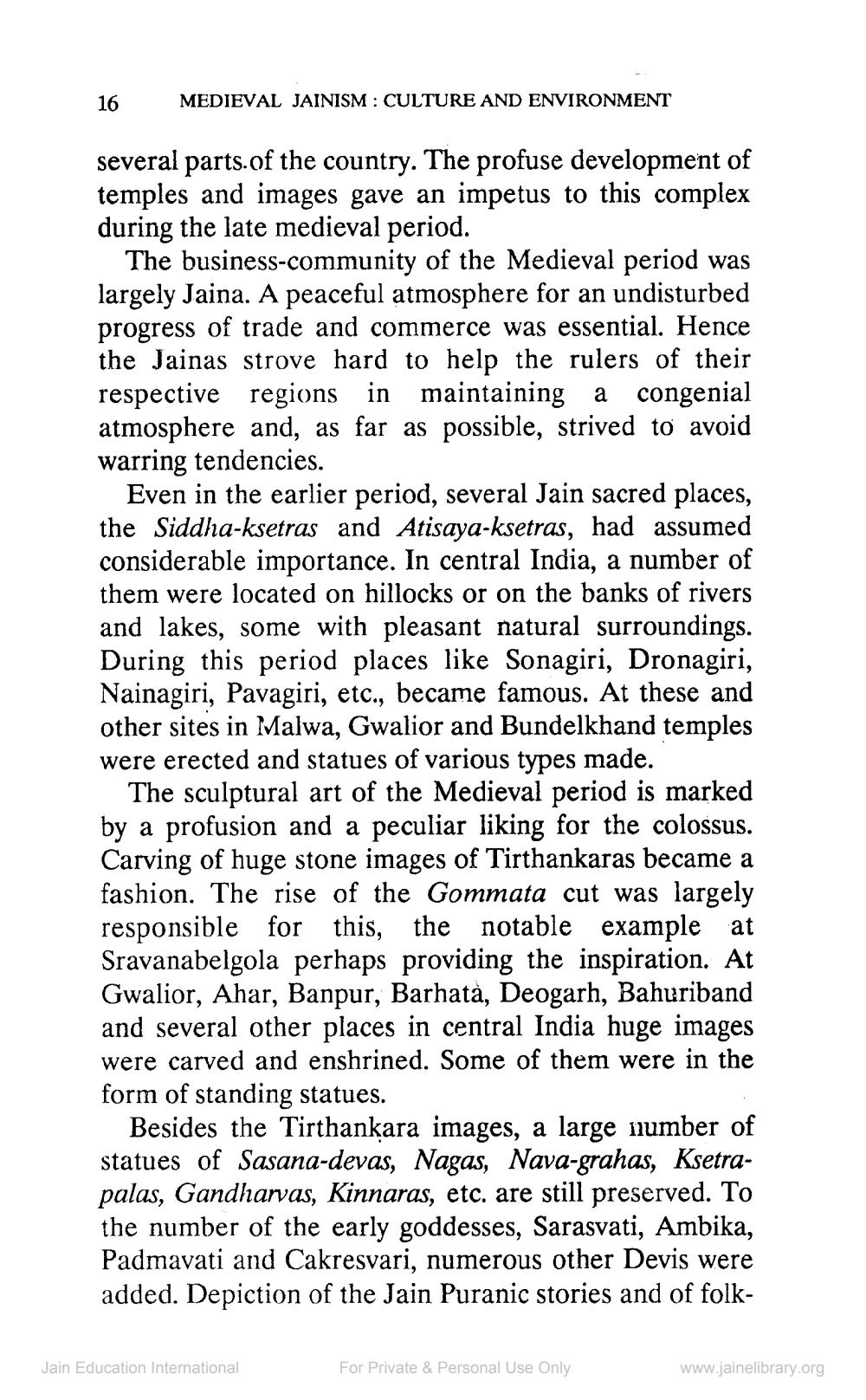________________
16
MEDIEVAL JAINISM : CULTURE AND ENVIRONMENT
several parts.of the country. The profuse development of temples and images gave an impetus to this complex during the late medieval period.
The business-community of the Medieval period was largely Jaina. A peaceful atmosphere for an undisturbed progress of trade and commerce was essential. Hence the Jainas strove hard to help the rulers of their respective regions in maintaining a congenial atmosphere and, as far as possible, strived to avoid warring tendencies.
Even in the earlier period, several Jain sacred places, the Siddha-ksetras and Atisaya-ksetras, had assumed considerable importance. In central India, a number of them were located on hillocks or on the banks of rivers and lakes, some with pleasant natural surroundings. During this period places like Sonagiri, Dronagiri, Nainagiri, Pavagiri, etc., became famous. At these and other sites in Malwa, Gwalior and Bundelkhand temples were erected and statues of various types made.
The sculptural art of the Medieval period is marked by a profusion and a peculiar liking for the colossus. Carving of huge stone images of Tirthankaras became a fashion. The rise of the Gommata cut was largely responsible for this, the notable example at Sravanabelgola perhaps providing the inspiration. At Gwalior, Ahar, Banpur, Barhatà, Deogarh, Bahuriband and several other places in central India huge images were carved and enshrined. Some of them were in the form of standing statues.
Besides the Tirthankara images, a large number of statues of Sasana-devas, Nagas, Nava-grahas, Ksetrapalas, Gandharvas, Kinnaras, etc. are still preserved. To the number of the early goddesses, Sarasvati, Ambika, Padmavati and Cakresvari, numerous other Devis were added. Depiction of the Jain Puranic stories and of folk
Jain Education International
For Private & Personal Use Only
www.jainelibrary.org




